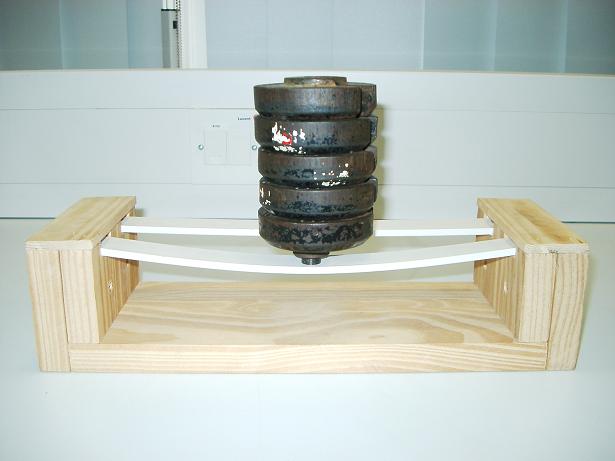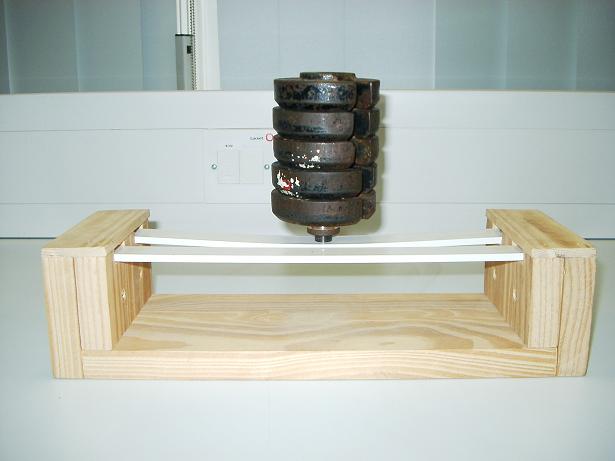Effect of boundary conditions
This demonstration shows the effects of the boundary conditions, or supports, of a uniform beam on its deflections and shows that fixed boundary conditions produce a stiffer beam than do pinned boundary conditions.


Fig. 7-4: Effect of boundary conditions
Fig. 7-4 shows the demonstration model which comprises a wooden frame and two plastic strips with the same length and cross-section. For the fixed beam, a plastic strip is attached securely to the frame with screws and glue at each end and for the simply supported beam a plastic strip is encased at its ends which are free to rotate.
A qualitative demonstration can be quickly conducted. Pressing down at the centres of each of the two beams it is possible to feel qualitatively the difference in the stiffnesses of the two beams. Based on the results in Table 7-1, the fixed beam is four times as stiff as the simply supported beam.
The loads applied and the deflections produced can be quantified. For a particular set of plastic strips, it is found that a concentrated load of 22.3 N produces a measured maximum deflection under the load of 3.5 mm for the beam with the fixed ends whereas for the simply supported beam the maximum deflection is measured to be 13.0 mm. The ratio of the measured displacements is the same as the theoretical ratio.
